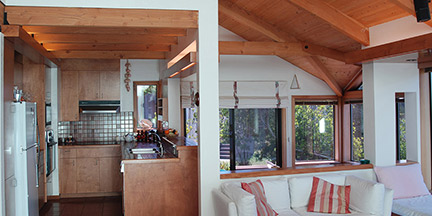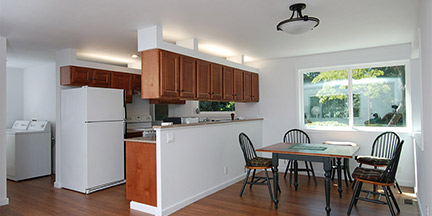 |
 |
|---|---|
 |
 |
Efficient use of space
Part of reducing a building’s impact on the environment involves making it no larger than it needs to be. The smaller building is, the less heat it loses or gains, reducing energy use. The smaller it is, the less “embodied energy” (energy required to create, manufacture, transport, and install a building material) is invested in a building. The smaller a building is, the more green space remains available around it to convert carbon dioxide to oxygen or allow rain water to be absorbed into the soil. Our clients and their guests often remark on how our designs seem larger inside than one would expect looking from the outside. We do this through working with our client’s spatial program and the site (requiring substantial amounts of tracing paper, which we recycle), until we have come up with the most efficient use of space, while at the same time providing the most spacious possible feeling. We have placed this principle first because, other than not building at all, the most important green building principle is to build as little as possible. This approach also saves our clients money. They don’t have to pay for extra building they don’t need. This gives them the freedom to select nicer finishes than they could with a larger building, and still meet their budget.
